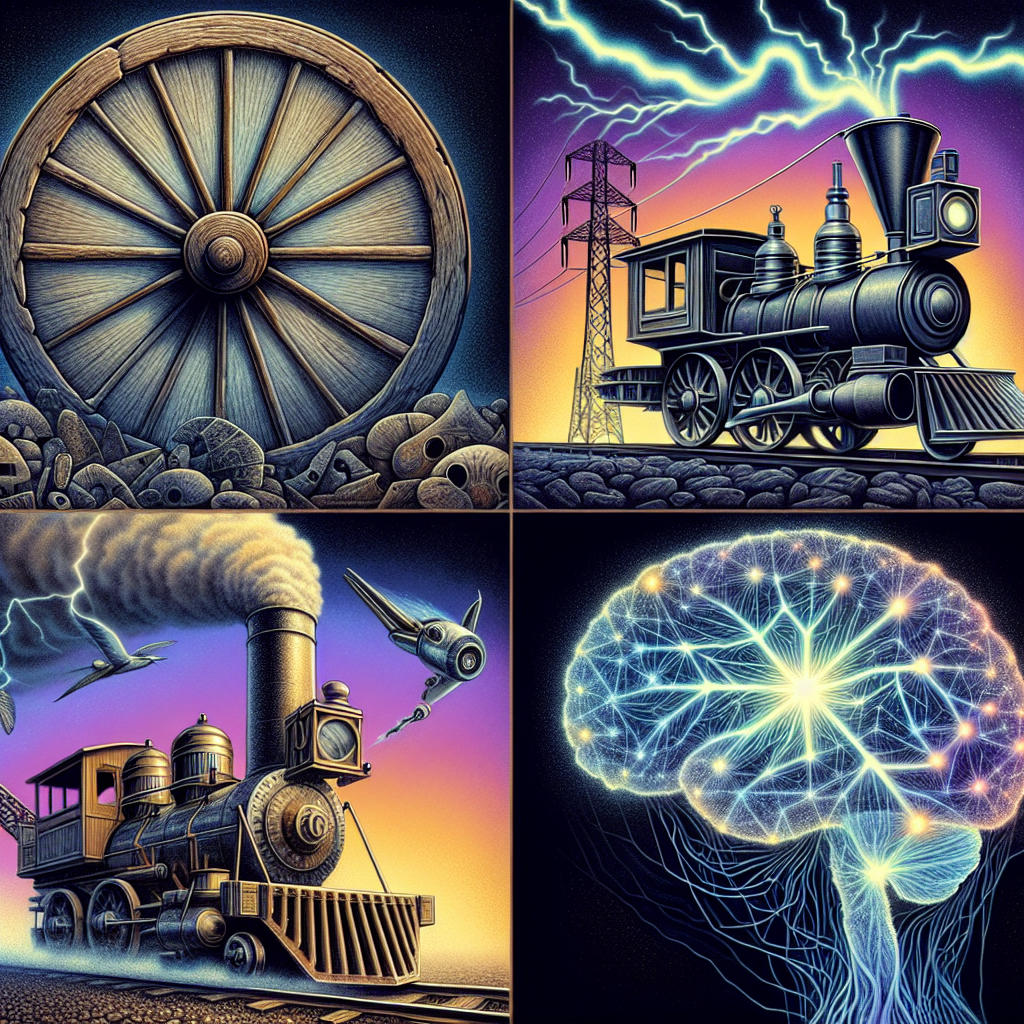Comparing the Emergence of AI with the Invention of the Wheel, Engine, and Electricity
- Mar 12, 2024






Artificial intelligence (AI) is often heralded as a transformative technology, drawing comparisons to historical innovations like the wheel, the engine, and electricity. Each of these breakthroughs reshaped human civilization, and AI is poised to have a similarly profound impact. To understand the significance of AI, it is helpful to compare it with these foundational inventions.
The wheel, invented around 3500 BCE, is one of the most fundamental advancements in human history.
Comparison to AI: Like the wheel, AI represents a foundational shift, but in the realm of information and decision-making rather than physical mobility. AI’s ability to process and analyze vast amounts of data can drive advancements across diverse fields, from autonomous vehicles to smart infrastructure, echoing the wheel's role in transforming transportation.
The internal combustion engine, developed in the late 19th century, transformed industry and society.
Comparison to AI: AI parallels the internal combustion engine in its potential to revolutionize industries. While the engine mechanized physical labor, AI automates cognitive tasks, such as data analysis, decision-making, and pattern recognition. This automation is poised to transform sectors like manufacturing, healthcare, finance, and beyond, much as the engine reshaped industrial processes.
Electricity, harnessed in the late 19th and early 20th centuries, was a transformative force in modern civilization.
Comparison to AI: AI’s potential impact on modern life is comparable to the transformative effect of electricity. Just as electricity became essential to nearly every aspect of daily life and technological development, AI is increasingly integrated into diverse domains, from smart homes and personal assistants to advanced analytics and autonomous systems. AI’s integration promises to enhance and expand the capabilities provided by technologies powered by electricity.
The emergence of AI can be compared to the historical impact of the wheel, the internal combustion engine, and electricity. Each of these innovations brought about fundamental changes in how humanity interacts with the world and each other. Similarly, AI is set to redefine industries, enhance daily life, and drive new technological advancements. While the wheel revolutionized physical mobility, the engine mechanized labor, and electricity transformed everyday living, AI is poised to advance cognitive capabilities, automate decision-making, and integrate deeply into the fabric of modern society, marking it as a pivotal development in human progress.